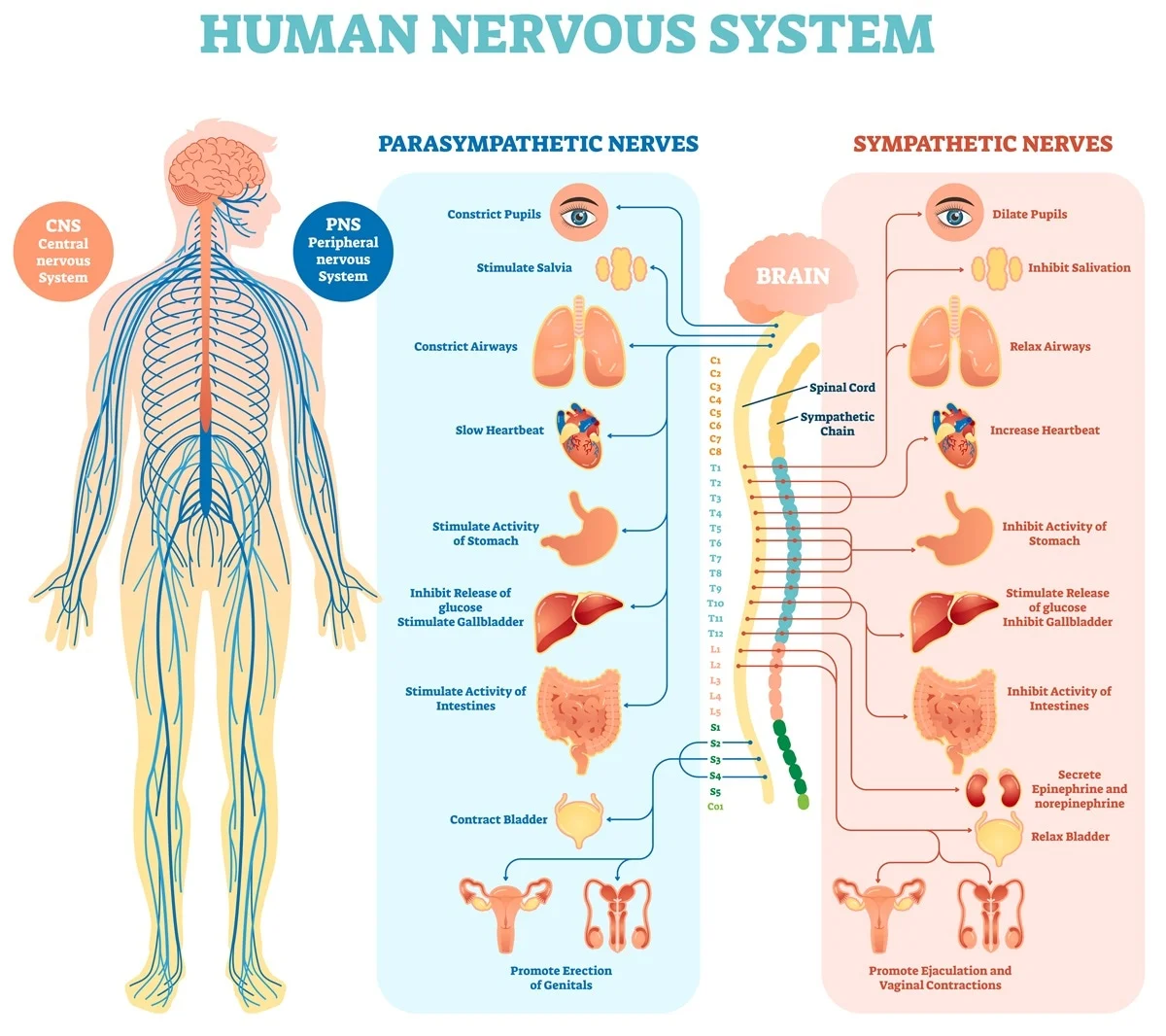Rewiring Your Stress Response: Understanding and Supporting Your Nervous System
Why understanding your nervous system could be the key to feeling more calm, connected and energised.
In our fast-paced world, stress has become almost expected. But have you ever wondered why your body reacts the way it does or why certain strategies seem to help more than others?
A big part of the answer lies in your nervous system.
By learning how this powerful internal network works, you can start to support your body in a way that feels calming, empowering, and sustainable.
The Two Sides of Your Nervous System
Your nervous system is like your body’s control centre, and it has two main parts:
1. The Central Nervous System (CNS)
This includes your brain and spinal cord - where everything is processed and coordinated.
2. The Peripheral Nervous System (PNS)
This links the brain to the rest of your body. It includes:
The somatic nervous system (voluntary movement)
The autonomic nervous system (involuntary functions like digestion, heart rate, and stress response)
When it comes to stress, it’s the autonomic side that does most of the heavy lifting.

Your Stress Response: Fight, Flight or Freeze
When your brain detects a threat (real or perceived), your sympathetic nervous system kicks in - this is often called the "fight or flight" mode.
You might feel:
A racing heart
Shallow breathing
Muscle tension
A sense of urgency or overwhelm
This response was incredibly helpful to our ancestors in the wild, but in today’s world, it can be triggered constantly by things like deadlines, emails, traffic, or even internal pressures.
The Rest-and-Digest Side
Your parasympathetic nervous system is responsible for calming things down again. It slows your heart rate, supports digestion, and helps restore balance.
This “rest and digest” mode is where healing, repair and hormone balance happen.
But here's the challenge: many of us are living in constant low-grade stress. Our systems rarely get the chance to switch gears and recover.
What Chronic Stress Can Look Like
If your stress response is always on, it can show up as:
Ongoing digestive issues
Sleep problems
Irritability or anxiety
Muscle tension or headaches
Low immunity or frequent colds
Difficulty concentrating
It’s not about being “too sensitive” - it’s about a system that’s stuck in overdrive.
Why Everyone Responds Differently
We all have unique thresholds and coping styles. Your genetics, early life experiences, emotional support, nutrition, and even your iron or B-vitamin status can all influence how you handle stress.
Gentle Strategies to Support Your Nervous System
You don’t need a total lifestyle overhaul. Small, consistent shifts make a big difference.
🌬 Breathe to shift gears
Try “box breathing”:
Inhale for 4 → Hold for 4 → Exhale for 4 → Hold for 4
Repeat for 2–3 minutes.
💤 Prioritise quality sleep
Go to bed at the same time each night.
Dim the lights early.
Avoid caffeine after 2pm.
🧠 Mind your mindset
Notice negative thought loops.
Try reframing or naming how you feel without judgement.
Practice daily gratitude (even just one thing).
🥞 Support with food
Eat enough - especially in the morning.
Include calming nutrients like magnesium, B vitamins and omega-3s.
Reduce sugar, alcohol, and excess caffeine if possible.
💕 Create your version of safety
Gentle movement, quiet routines, or feeling connected to someone - all of these tell your nervous system it’s safe to settle.

Ready to Begin?
You don’t need to meditate on a mountain or journal for hours. But you do need space to exhale.
If you’re not sure where to start, my free guide, Master Your Mornings is a beautiful place to begin. It’s designed to help you ease into the day with nourishment, calm, and clarity.
And if you're craving more personalised support, I offer 1:1 sessions to help you understand your patterns and build a nervous system-supportive routine that works for you.
The bottom line?
Your body isn’t broken.
It’s communicating.
Learning to support your nervous system is one of the most empowering shifts you can make for your health - and you don’t have to do it alone.

